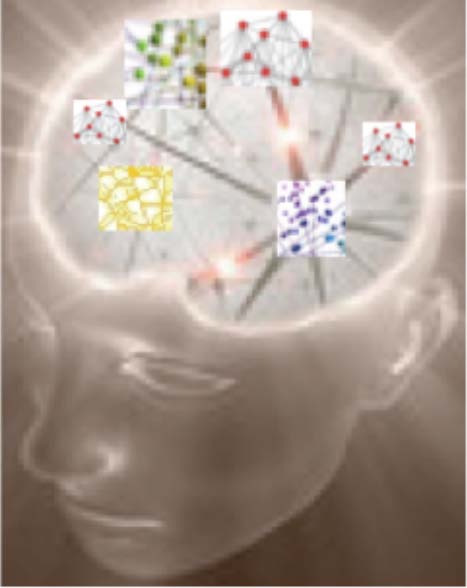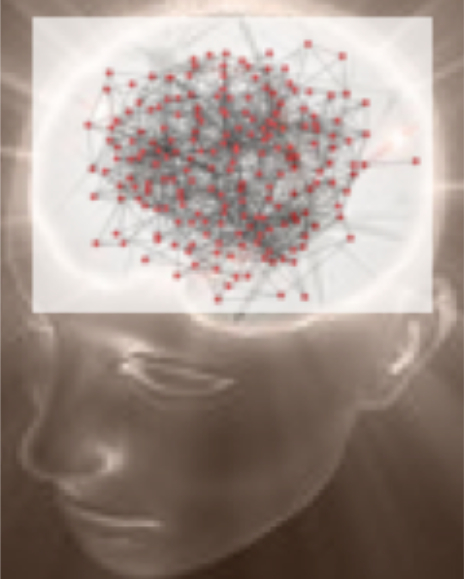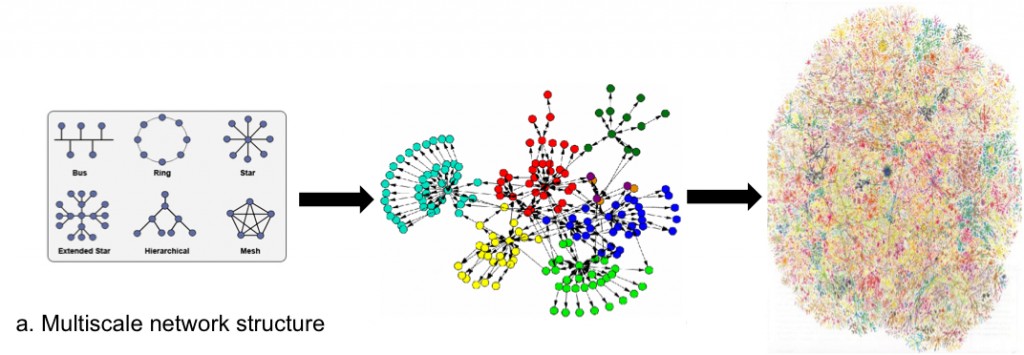
EEG signals may reflect underlying brain connectivity patterns in autism. This brain has less dense local clusters linked by long-range connections, which may represent a normal pattern. The brain at right has denser, more uniform local connectivity with fewer long-distance connections in some regions.
Bill Bosl is used to looking for patterns. A computer scientist trained in atmospheric physics, geophysics and mathematics, he’s invented a method for computing properties of porous materials from CT scans. At the Lawrence Livermore National Lab, he worked on remote sensing problems, reading complex wave patterns to discern the location of groundwater, oil deposits and fault lines.
 Today, he’s trying to measure thought – to compute what’s going on in hard-to-understand disorders like autism, which is currently diagnosed purely on the basis of behavior. “The mathematical methods are very similar,” he says. “You’re analyzing waves.”
Today, he’s trying to measure thought – to compute what’s going on in hard-to-understand disorders like autism, which is currently diagnosed purely on the basis of behavior. “The mathematical methods are very similar,” he says. “You’re analyzing waves.”
The waves in this case are electroencephalograms (EEGs), those squiggly lines generated by electrical activity in the brain. In autism, Bosl’s research suggests that EEG signals are whispering that something’s amiss in brain function and structure, even in infants too young to have developed any outward signs.

Some basic types of connection patterns between neurons and groups of neurons, forming a complex network.
The aberrations aren’t detectable to the eye, but can be picked up with machine-learning algorithms that separate signal from noise and detect complex patterns. This week, Bosl and Charles Nelson of the Laboratories of Cognitive Neuroscience at Children’s Hospital Boston reported that EEG patterns had 80 percent accuracy in distinguishing 9-month-olds at high risk for autism (by virtue of having an affected sibling) from controls.
The study also revealed some interesting gender differences – for example, classification accuracy was 100 percent for boys at 9 months, and remained high at 12 and 18 months while declining in girls.
Bosl’s computational technology still needs validation, beginning with following the high-risk infants in this study into early childhood, to see if they actually develop autism. As Bosl and Nelson will agree, all they’ve done is tell us which infants are more likely to have a sibling with autism.
But if the findings hold up, EEGs could provide a simple, inexpensive and completely safe way to diagnose autism, or even to screen infants for it. As any special needs teacher can tell you, the only real “treatment” for autism – early behavioral intervention – works better the earlier you start it. And this requires early detection.
“My goal is to do this cheaply, and on a large scale,” says Bosl. “I would like to see cheap headsets in every pediatrician’s office, used at every visit to check cognitive growth.”
Bosl risked everything to leave geophysics for medicine about five years ago, moving his family to the East Cost and eventually landing in the Children’s Hospital Informatics Program. He started out modeling cellular systems, but soon became interested in cognitive and mental disorders. He met Nelson and Helen Tager-Flusberg at Boston University, who brought him into the Boston autism research community.
He’s been able to get limited support from the Simons Foundation, the NIH and Children’s Technology & Innovation Development Office (TIDO), which supports innovative projects addressing unmet medical needs. Getting major funding has been tougher, because the idea is novel and the research at an early stage of data collection (the classic chicken-and-egg problem). Meanwhile, TIDO is seeking commercial opportunities.
Bosl sees broader mental health applications for his algorithm. He is exploring potential collaborations with Children’s psychiatrists to measure brain changes in patients with emotional issues participating in a “RAGE Control” intervention, and to measure drug efficacy in children being treated for major depression.
“The potential is there to totally change the behavioral sciences by introducing an objective measure of brain-behavior relationships,” says Bosl. “By the time symptoms appear, it may be too late to introduce the most effective interventions.”
Bosl is particularly interested in global mental health, where there is a need for rapid and efficient diagnosis, and where resources are often limited.
“Traditional Western approaches, which rely heavily on human experts, are too expensive and the professionals simply aren’t available,” he says. “If you had a cheap diagnostic device, a lightly trained clinician or social worker could take it around to collect data and send it away for further analysis. “
It’s likely to be computer gaming that really launches this technology. Companies like Emotiv have already built headsets that provide computer-brain interfaces, using sensors to pick up the brain’s EEG signals and connect to various computer applications.
“Gaming absolutely requires that the devices are very cheap, durable and easy to use,” Bosl says. “The competition to make the quality go up is going to be very intense.”








